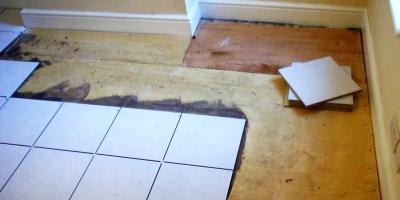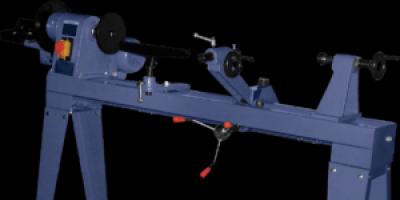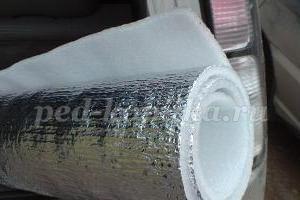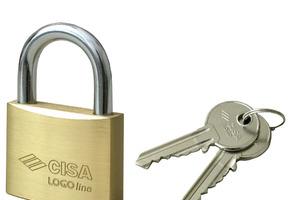Fortunately, these days everyone can control their temperature remotely. country house. The company offers the most modern and effective solutions to control the temperature during the winter months using remote control.
What tasks should a remote temperature control system perform?
Typically, a heating control system has two tasks:
1. Maintaining the required temperature in the house. At a minimum, it should ensure that the building itself and the heating system in it do not freeze.
2. Remotely turn on heating in a country house or in a smart home. For example, before the arrival of the owners, so that by the time of arrival all rooms have warmed up to the required temperature.
To solve these problems, the temperature control system must meet the following requirements:
1. Provide information about the current temperature in and outside the home.
2. Send alarms if the temperature is outside the acceptable range.
3. Have remote control, in particular, the ability to regulate the temperature in individual rooms or in the entire smart home in any convenient way (using a mobile application, via SMS messages, etc.).
4. Opportunity self-configuration and installations.
Ways to control the temperature at the dacha in winter
There are two ways:
1. If your dacha has internet with a Wi-Fi router. In this case, you just need to purchase a GSM system that works via Wi-Fi. You can receive information about the temperature and control it through a program on your PC or a mobile application on your smartphone.
2. If there is no WI-FI at the dacha. In this situation, the solution would be to use a regular SIM card in a GSM system. There is a market a large number of manufacturers of this equipment, and our company is ready to offer you the best available options.
What is a GSM thermostat?
The basic device of the GSM system is, to which you can connect various sensors (water leaks, gas leaks, smoke detectors and others), including .
Modern GSM thermostats, improved with additional software functions and equipped with relays, are equipment for full control of the temperature of heating boilers.
How does a GSM thermostat work?
The program underlying the operation of the GSM thermostat allows you to:
1. Set temperature thresholds (lower and upper) and receive SMS messages or voice alerts via an incoming call if the temperature goes beyond these values.
2. Call the control module and receive voice information about the temperature from each thermometer connected to the unit, or send SMS commands and receive information about the temperature at the dacha in the form of SMS messages.
3. Program the alert function: for example, to receive an SMS message with information about the temperature in the smart home and outside it several times a day at a certain time.
4. Set a certain temperature in the interior of the house and change it via a call or SMS message at the right time for you (for example, half an hour before your arrival at the dacha).
The operating principle of all GSM thermostats is the same. Only the details (controller and microcircuits) may differ depending on the manufacturing company. We can connect the functions of water leakage, security with video and photo recording for minimal money. Subsequently, it will be possible to expand the functionality as needed (the constructor principle).
What is a modular control system?
The technical component of the operation of the GSM thermostat is provided by a modular system, since there can be quite a lot of external controlled devices (modules): a heating boiler, electric heaters, a security alarm, etc.
In essence, a GSM heating control system is a specialized controller that is correlated with external sensors and has the ability to change the operating modes of the heating boiler.
The GS module for temperature control can operate in four modes:
1. Manually. When the system is controlled via SMS messages or calls, with the help of which the user sets one or another temperature regime.
2. Automatic. When, based on signals from external sensors, the controller maintains user-set temperature conditions. In this case, you can change the automatic mode settings at any time.
3. Control mode. When the system sends SMS messages to the user with alarm signals: smoke, gas leak, critical temperature values, etc.
4. Scheduled for a week. With the ability to set the temperature at certain hours and certain days of the week.
Which GSM module to choose?
The main selection criterion is that the module must perform the functions you need:
- simultaneously support required amount temperature sensors (three, five, ten - your choice);
- communicate via calls or SMS messages (as convenient);
- optimally suit your boiler model (our specialists will help you understand this problem).
The main advantages of GSM heating control systems:
- round-the-clock and effective temperature control in a smart home or cottage;
- convenient remote control via a mobile application or via SMS messages;
- expandability through additional modules;
- ease of setup and installation;
- low cost;
- no subscription fee.
Do you want your country house to maintain optimal temperature conditions during the winter months? Our specialists will help you select, install and configure the most modern and reliable. Contact us by phone or via.
Today we will talk about the possibility of automating the control of heating boilers in a country house. Indeed, today there is no problem to provide remote dispatching household systems, including heating, ensuring savings and a high level of comfort.
Goals of remote control
How often does the average resident of a country house approach the heating boiler? If it is a gas or electric unit, then minimal attention is paid to it. Thanks to modern devices Automation allows autonomous operation of the boiler for a very, very long time. Only in severe frosts do you want to turn on the light in order to feel this pleasant contrast even more strongly: there is snow and wind outside the window, but the house is warm and cozy. But remote dispatch exists, so what problems does it solve?

To begin with, there are two heating operating modes: economical and comfortable. If the residents of the house are absent for 10-12 hours a day, why maintain the optimal 23 ° C, if you can set the temperature sufficient for safety indoor plants and pets? And if the system operates in a saving mode during the absence of the owners, how to ensure a quick return to rated power so as not to return to a half-cooled house every time? Of course, you can use timing management, but it’s rare that a person can boast of a clear and uniform schedule. So, the first goal of remote heating control is to quickly change the heating power.

Another aspect lies in the stability of the system. No matter how reliable and high-quality boiler equipment is, the probability of an accident is still not zero. A drop in pressure, a stop in circulation, gas leaks - all these phenomena are potentially quite frightening. If the boiler room is left unattended for a long time, then remote dispatch provides its second important function - monitoring the performance of the system and notifying the user of problems. Well, the third function is the ability to remotely troubleshoot or prevent the consequences of an accident.
Type of fuel and operating modes
Electronics provides a huge range of solutions of varying levels of complexity, including those controlled over long distances. However there is a big difference The type of heating system you have to deal with directly determines the completeness and cost of the equipment.

Easiest to manage electric boilers: one or more heating elements can be switched by a simple contact or solid-state relay. Additional switching can be used to control forced circulation devices. Neither gas leaks nor attenuation of the solid fuel combustion chamber can occur.
If gas is chosen as the source of energy for heating, the boiler room is classified as a high-risk facility. Backdraft can extinguish the burner, which faulty automation will happily ignore. Remote control will allow you to turn off the gas supply or re-ignite the boiler, and if this is not possible, drain the water from the system to prevent it from freezing.

It is more difficult than others to manage heating systems on solid fuel. This requires control automatic feeding fuel, it is extremely important to maintain constant circulation so that the coolant does not boil. But even in this regard, dispatch devices cope with a bang: after all, everything is controlled by electromechanical devices, and it is very easy to interfere with their work remotely.
Electric boilers
Remote control electric boiler is included in the category of the most budget projects. Depending on the configuration and operating modes of the system, several options can be offered.
For heating without power control, where the problem of freezing is not relevant, that is, for hydraulic systems with antifreeze, as well as air and convection systems. In such cases, all problems are solved primitively - with a “smart” socket that can receive GSM messages (Brownie, Sokol). The issue price is on average from 300 to 1000 rubles, the difference in cost is due to both differences in quality and switched load, and the availability additional functions. For example, the outlet may have a built-in thermostat or timer, as well as standalone source nutrition. Some models have the ability to connect to mobile devices for easier setup of operating modes. Most products provide feedback to the user; in particular, such sockets can notify about the correct execution of a command or the absence of electricity at the site.

For multi-stage boilers and other heating devices with several active elements, you can use several sockets, but it is better to install one multi-channel (Elgato, Polygator) - the so-called rebooter. These devices are available in a wide range of configurations - both conventional plug multipliers and DIN rail mounting options. The principle of operation is the same: remote control of the load by sending an SMS with an instruction code or a call. Here you can already implement quite interesting operating algorithms, such as turning on an additional heating circuit with a separate thermal control system. It will be enough just to make small changes to the scheme electrical connections boiler by connecting separate heating elements to different channels.
Gas boiler houses
Unlike electric gas systems heating systems require remote dispatch not only to receive commands, but also to provide high-quality feedback. Since direct control of a high load is not required, the solutions of the class described above are not entirely applicable. The optimal way out of the situation would be to use a modular switch with 3-4 contact groups, controlled via one of the wired interfaces (RS-232, 1-wire, etc.). Messages can be transmitted both via the GSM channel and through communication with a PC installed at the site. Usually, for the purpose of increased reliability, a main and backup channel are organized.

The price range for gas boiler control systems is incredibly wide. In the lower price segment there are devices from budget “Xitals” for 7-8 thousand rubles to more user-friendly Segnetics for 15-20 thousand rubles. The middle level includes domestic automation complexes OWEN; a set of devices can cost 20-30 thousand rubles. The most complex systems costing more than 50-70 thousand rubles are used in modular boiler rooms common use: on the one hand, dispatch notifies the service organization about the status of the system, on the other hand, users, at their own discretion, manage individual parts of the collector unit. Solutions of this kind are not just a set of devices “out of the box”; manufacturers of boiler room equipment such as ROSS and Viessman work in this category, providing the consumer with a comprehensive project and carrying out installation, configuration and maintenance of the system by qualified personnel.
In essence, such devices are ordinary alarm units that have from 6 to 20 control zones and are capable of managing 3-5 groups of dry contacts. There are two popular architectures for such systems. "Xital", for example, are specialized boiler room automation units, which are initially designed to connect standard temperature, gas sensors, smoke and flame detectors. In turn, systems such as Segnetics and ARIES are based on freely programmable controllers, which can be supplemented with communication devices and separate switching units. Their main feature is the ability to connect atypical sensors and control actuators of completely different types.

The main difference between representatives of the latter group is the presence of a convenient user interface: Segnetics is easily configured when connected to a PC or mobile devices, but ARIES complexes require a more serious engineering approach, including writing your own firmware in high-level programming languages. What choice you make for yourself depends on the complexity of the boiler unit and the boiler room piping. Thus, the simplest Xital block will be sufficient for complete control over the operation of low-power parapet and chimney boilers (up to 40 kW), while OWEN is used in boiler rooms with parallel connection units, or centralized systems air heating and conditioning.
Solid fuel heating control
Freely configurable control systems are optimally suited for solid fuel boilers, as well as installations associated with biogas generation devices. The reason for this is obvious: such boiler houses are initially designed to operate in the presence of an operator and, as a rule, have individual scheme operating mode settings.
Thus, for the simplest solid fuel boiler, it is necessary to regulate the inflow and draft, control the temperature of not only the air in the room, but also the coolant at the inlet and outlet of the boiler. Additionally, you should carefully monitor the operation of the circulation system by differentially measuring the pressures at the inlet and outlet of the recirculation unit. Including gas analyzers in the complex will also not be superfluous; in addition, it is worth taking into account the temperature of the combustion products. The secondary function of such dispatch systems can be called ensuring economical fuel consumption and optimal modes its combustion depending on the desired temperature and weather outside the window.

It is important to emphasize that full direct control over each boiler unit will be unnecessary for the average user. Therefore, to control solid fuel heating, complexes of two nodes are used: receiving commands presented by a GSM receiver or Internet router, as well as a software and computing complex, which is configured once and then ensures the correct interpretation of the commands.

Additional complexity is introduced by the variety of actuators. Servo drives are used to control valves and dampers; the performance of smoke exhausters and blower fans and circulation pumps is usually controlled by a frequency converter or PWM. The complex architecture of the system requires ordering not individual automation modules, but a ready-made set of equipment. However, most suppliers of such systems provide this type of service for a very reasonable price: standard projects about 30-40 thousand rubles, including the cost of equipment, but automation of an atypical boiler room with automatic fuel supply can cost more than 50 thousand rubles with a power of up to 100 kW.
Special Features
As a result, we will analyze which functions of dispatch systems are strictly required, what is the logic of action similar devices and what additional options exist. So, when choosing automation with remote control, preference should be given to those products that provide the following functions:
- availability of a backup communication channel;
- watchdog timer that reboots the system when it freezes;
- polling of individual control zones;
- remote management of contact groups and a sufficient number of them;
- notification of system state changes;
- Feedback, sending messages about the acceptance and execution of commands.
Additional capabilities of the dispatch module must be determined in accordance with the design features of the heating system. Thus, for liquid heating systems, it is recommended to have protection against leaks: humidity sensors and an electronic pressure gauge capable of recording a prolonged drop in pressure. For open systems heating, it is desirable to control the liquid level in the expansion tank.

Particular attention should be paid to monitoring the operation of forced circulation devices. If the boiler is technically unable to turn off heating when a critical temperature is reached, overheating can only be indicated by the readings of the temperature sensor on the supply pipe, which the control unit receives with a significant delay. In such cases, it is necessary to remotely stop heating by stopping the supply of fuel or air, and if there is a risk of freezing of the coolant, drain it.
For remote monitoring systems, it is preferable to have an automatic response to abnormal sensor readings. For example, the automation itself should adjust the circulation speed depending on the temperature of the coolant in the supply and return, but the user should only receive notifications about critical conditions. In general, we can say that the most important benefit from using the systems we have considered is the timely receipt of information about breakdowns, which allows you not only to take personal part in eliminating the accident as quickly as possible, but also to purchase replacements for faulty components or call a specialist if necessary.
| Device type | Control method | Functions | Price, rub |
| Smart plugs | |||
| TP-LINK HS100 | Wi-Fi Internet | Remote on/off, timer | 2188-2290 |
| Smart GSM socket SC1-GSM | GSM | Timer, remote on/off | 2390 |
| Telemetrics GSM-Socket T4 | GSM | Remote on/off | 5990 |
| SimPal T4 | GSM | Triggered by sensor (thermometer) | 3600 |
| Controllers | |||
| XITAL GSM-T | GSM | 2 temperature sensors, 3 independent relays, up to 12 control zones | 8640-9090 |
| GSM Device SOKOL GC-5 | GSM | 5 load control channels up to 10A | 3250 |
| EctoControl | Wi-Fi/GSM | Possibility of connecting up to 67 sensors | from 9900 |
| ARIES TRM132M | Wi-Fi/GSM | Temperature control in the circuit and in the room, a set of preset modes, overheating protection, diagnostics emergency situations | 14300 |
The capabilities of devices for remote heating control are becoming more and more advanced every year (and what about the year - almost every month!). Developers of smartphone applications try to make them easy to use and easy to understand, even for untrained people. Let us briefly list only the main capabilities of such systems that support:
- normal operating mode, when the set temperature is maintained throughout the house;
- zonal mode, when different rooms can have individual temperatures;
- preventing defrosting of the heating system (freezing of pipes) during the cold season, when you are away from your country house or dacha;
- the ability to turn on the boiler in advance, for example, you need to warm up a country house when you plan to visit it on weekends or holidays;
- always be aware of your work autonomous heating and, if necessary, diagnose it;
- time mode in which different time During the day, the house can maintain its own thermal regime with a significant reduction in material costs for fuel, for example, you can adjust the boiler to low power(respectively, for low fuel consumption) when going to work or on business, and turn on the normal mode before returning.
Remote heating control means that any of these modes, as well as specific room temperature values, are changed using mobile communications, or heating is controlled via the Internet.
This approach is part of the ideology of creating “ smart home”,
which entails the further development of all engineering systems home in order to ensure ease of use and create the most comfortable living conditions.
Which heating system can be controlled remotely?
In country houses and cottages, two-pipe systems with forced circulation coolant: circulation pump pumps coolant throughout the heating system, which, thanks to the distributor comb, can be supplied to each heating device.
In such systems, as a rule, a safety block of the heating system is used to protect it from destruction in unforeseen situations, for example, in the event of an increase in pressure above the permissible level.
It is also necessary to have additional equipment to control the operation of the heating system: sensors, special valves and devices for adjusting coolant flow, and it is also necessary to combine various devices to the information network
Weather-compensated heating control
Today it is considered the most promising. In such systems, in addition to the room temperature sensor, an external air temperature meter is also used. In principle, a weather-dependent heating controller will work with one external sensor, but using two allows you to achieve more accurate mode maintenance and even implement self-adaptation of the system to specific temperature changes: if it gets colder outside, then the temperature of the coolant in the system increases in advance, if it gets warmer - then it decreases in advance. In addition to saving fuel, this reduces the inertia of the system, which increases its efficiency and also provides additional cost reduction. One of the basic points of weather-sensitive heating control can be used at a temperature of plus twenty degrees - at which the coolant temperature is taken equal to the ambient temperature, and the heating is actually turned off. It is also necessary to take into account zonal temperature control, i.e. if, for example, a large number of people have gathered in one of the rooms, due to which it has become hotter, then the system detects a local increase in temperature relative to the one set by the weather heating regulator and makes corrections in this zone.
In general, serious battles broke out on the Internet about - Is it worth using weather-sensitive automation at all or is it money thrown away? In short, the opinion of our specialists, confirmed, by the way, by reviews from numerous clients, is unequivocal - yes, it’s worth it, but not in all cases. And in which ones? Answer
Types of remote heating control systems
There are currently two systems in use for remote heating control:
- using a set of equipment with an Internet gateway. In this case, a Wi-Fi router and an Internet network are required.
- using a GSM heating control module. A special GSM module with a cellular operator SIM card is required.
Remote control of the boiler room using mobile GSM
What to do if there is no wired Internet in a country house? How can you control the heating in this case?
Yes, very simply - using a special GSM module and, of course, mobile phone. In fact, the GSM module plays the role of your personal assistant - you called it, gave a command, for example, to heat it hotter by a certain time in advance - and the whole family will arrive in a warm and cozy home. Or, on the contrary, you forgot in the morning, leaving for work, to turn down the boiler power - no question, you can do it right from work, via the Internet or directly from your smartphone while you are still getting to work.
A GSM module is a compact device with its own SIM card from any operator (it is important that it provides reliable signal reception in a given area), allowing you to control the indoor climate from any phone (satellite, mobile or fixed line), tablet or PC.
The undisputed leader in the GSM thermostat market is currently Russian company MicroLine company. The company produces a wide range of GSM modules for remote control heating boilers, including multifunctional controllers that provide control of the most complex systems heating.
You can buy it in the appropriate section on our website. GSM heating control
Depending on the settings made, your phone will receive either short SMS notifications with various information and instructions for changing the settings of the heating boiler, or phone calls with various information about the operation of the heating system. A special mobile application is installed on the phone (there are versions for Android, iOS, and Windows Phone), which allows direct remote control of almost all parameters of the heating boiler.
A GSM heating control module is essentially a computer connected to external sensors and has the ability to change the operating modes of the heating system. Naturally, the module must be located in the area of reliable reception of mobile operators.
The GSM heating control module can operate in several modes:
- automatic, when, based on signals from installed sensors, the controller supports specified modes according to a given program;
- SMS heating control, when the heating system is controlled by sending SMS. In this case, when new data arrives, for example about room temperature, the controller accepts it for execution and begins to support it automatically;
- warning, by sending alarm messages about the current condition of the house (gas leak, break in the water supply system, etc.);
- remote control of other devices connected to the GSM module (watering, lighting, alarm, etc.).
GSM – heating control allows you to remotely:
- receive room temperature reports;
- receive notifications about the current state of heating equipment;
- change the operating mode of the system, increasing or decreasing the temperature, including separately in each room.
Heating control is not limited to these functions. In principle, any heating system can be converted into a remote one. To do this, it must have an automatic operating mode, and a special GSM controller must be connected to it to control the heating and communicate with the subscriber.
Is this not enough for you? Then look at the capabilities of multifunctional GSM controllers, for example: ZONT H-1000 or ZONT H-2000 The devices are complex and require professional knowledge during installation and configuration, so installation requires only highly qualified specialists - contact our company, we have them!
Remote control of the boiler using a set of equipment with an Internet gateway
Now let’s consider the option of remote heating control, if your country house or dacha has the Internet and, naturally, a Wi-Fi router (aka router).
Everything is much simpler here - you can look at the capabilities of the devices proposed below and forever forget about worries about the state of the heating system of your home.
Salus IT500 provides control and adjustment of operating parameters in a maximum of two heating zones, for example, in the 1st room on the first floor of the cottage and the shower room on the second floor.
The kit includes an actuator (boiler receiver), a room 2-channel thermostat (weekly boiler programmer, boiler control panel) and an Internet gateway connected to the Internet router (router).
 Possibilities for controlling the heating system using a set of equipment with the Salus iT500 Internet gateway:
Possibilities for controlling the heating system using a set of equipment with the Salus iT500 Internet gateway:
- control of heating modes only (boiler and, if necessary, pump);
- control of multiple heating zones;
- control of heating and hot water supply of a country house.
- maintaining different temperatures V different rooms, schedule of temperature conditions by day, hour and minute
- 6 preset heating modes on delivery
- heating control hot water, automatic control modes, including energy-saving and vacation mode.
- a unique system for connecting devices via the Internet, providing reliable connection and control of the heating system: smartphone (or personal computer) -> Internet server -> router (router) -> thermostat -> receiver -> boiler
All equipment is wireless and communicates with each other via a radio channel, i.e. no need for gaskets electrical wiring. Room thermostat for the heating boiler it is programmed for daily, weekly or 5+2 operating modes. The thermostat screen and remote heating control apps display current state boiler, current and set temperature. Setting the operating schedule can be done from the thermostat panel, through an Internet browser or using a mobile application.
The thermostat has modern design, is highly reliable and safe when used.
Using additional Salus Controls equipment, control is possible, including remote control, warm floors, gas and electric boilers, oil systems heating, as well as almost any other heating systems and devices.
Remote control does not require a dedicated external IP address, the entire system works perfectly on any mobile Internet (Yota, Megafon, Beeline, etc.), control is also possible from computers and mobile devices on Android and iOS operating systems.
What to do if there is no wired Internet in the house, but you have already purchased a Wi-Fi Internet thermostat?
Most likely, the dacha has coverage from mobile operators, isn’t it? So you also have the Internet! Just buy a Wi-Fi router with a USB port and, in addition to it, a 3G or 4G modem. Install a SIM card from any mobile operator into the modem, providing a reliable signal in the area where your home is located. You insert the modem itself into the USB connector of the router and that’s it - now you have the opportunity to control the heating of your dacha remotely!

If the iT500 seems a little expensive for some, the company offers a more budget-friendly solution - an Internet thermostat Salus RT310i
The thermostat has somewhat reduced capabilities compared to its “big brother”, but may turn out to be a worthy replacement for it, thanks to the lower price of the kit. Externally, the RT310i looks more modest compared to the first-class high-tech design of the iT500; it lacks touch controls, but in terms of functionality the models are almost identical. Except that while the iT 500 is capable of controlling 2 zones of heating or cooling, the RT310i can only control one zone.
Missing the iT500's features? No problem - Salus iT600 can do everything and more!
If you do not have enough iT500 functionality to control only two heating zones, then a more functional one is presented on our website multi-zone(there are wired and wireless versions) system Salus iT 600 Smart Home. Indeed, its capabilities for remote heating control (and more!) are enough for even the most demanding consumer!

iT 600 Smart Home combines the ability to control warm water floors, remote control of heating using thermostats, unified switching at the “system” level smart House", changing the temperature in each room using a smartphone with Internet access, monitoring and managing any electrical appliances in the house, connecting window and door opening sensors and many other functionalities. The system was far ahead not only of its competitors in the field of remote heating control, but also set the trend in the field of automation and dispatch of engineering systems for many years to come!
More details about the capabilities of the system can be found in the article:
Smart House. Heating control system SALUS iT600
Attention! The new line of Salus iT600 Smart Home products is already on sale!
Now you can not only control heating remotely, but also protect your home and control electrical appliances!

Now you have the opportunity buy Salus iT600 Smart Home- a new line of automation for the Smart Home!
This is the same full-fledged system for remote heating control via the Internet iT600 plus additional features:
- use of a universal Internet gateway Smart Home UGE600, which now supports up to 100 wireless devices on the ZigBee network and is used to replace last year's version of the Salus G30 gateway.
- monitoring and control of various electrical appliances connected to Salus SPE600 smart sockets with the ability to meter consumed electricity
- connection and control of security alarms with help wireless sensors opening doors or windows Salus OS600 Door Sensor
- managing your system has become even more convenient, thanks to the new Salus Smart Home application for smartphones on iOS and Android, the interface of which and device registration have become much simpler and clearer!
All components of the system are wireless devices operating in the modern ZigBee home network standard; now you can create separate groups of devices that work together and to which individual tasks can be assigned.
In the future, the company's engineers intend to expand the capabilities of the smart home control system, but now you can buy Salus iT600 Smart Home, starting with the essentials, and build your own Smart Home at a very attractive price!
What should owners of outdated heating systems do?
Tech WiFi 8S can control the temperature in 8 rooms, each of which can have up to 6 thermal drives!
In addition to controlling thermoelectric actuators, the controller can also control the boiler: when all rooms reach the set temperature, it will turn off the boiler using a “dry contact”.
Buy heating control system TECH WiFi-8S
Remote control of complex heating systems
The Polish company Tech Controllers, which produces a wide range of controllers with remote control capabilities, is gaining an increasingly large share in this market segment.
The Tech controllers themselves are multifunctional devices that are the main, basic part of the system, which can remotely control almost any complex heating systems using additional modules. There are a lot of possibilities, so using an example we will only consider the possibilities for remote control.
Example of installation of Tech Controllers equipment 
In the photo used for installation:
1. Controller Tech ST-409n- a multifunctional device designed to control the central heating system, providing:
interaction with three wired room regulators
interaction with wireless room thermostat
smooth control of three mixing valves
DHW pump control
return temperature protection
weather-compensated control and weekly programming
possibility of connecting the ST-65 GSM module for remote heating control from a GSM smartphone
possibility of connecting the ST-505 module, which allows remote control of the boiler via the Internet.
ability to control two additional valves using additional modules ST-61v4 or ST-431 N
Ability to control additional equipment, such as garage doors, lighting or sprinklers, etc.
Various Tech modules can be used for remote control, it all depends on the specific needs of the owner. For example:
What to do if the heating system is so individual that none of the above solutions can fully meet the owner’s control needs?
There are no hopeless situations! Most often, the customer himself simply does not understand (and should not!) all the possibilities modern systems remote heating control. It is really difficult for an untrained person to understand all this abundance of devices offered on the market, which are completely different from each other in functionality, price, and, of course, quality. And installers, often, simply have no idea about the capabilities of controlling heating systems - their task is to install the system, but they don’t care how often you run around the house (or to the boiler room) and turn various valves to ensure constant thermal comfort . Our specialists have more than once had to almost completely remake the “creations” of such craftsmen, and this, believe me, costs a lot of money. The stingy pays twice... Contact us, we will advise you for free, and if necessary, we will install a remote heating control system and help you with the selection quality equipment at a reasonable price.
Specialists of the company "Thermogorod" Moscow will help you choose, buy, and install a remote heating control system, will find an acceptable solution at a price. Ask any questions you are interested in, a telephone consultation is absolutely free!
You will be satisfied by cooperating with us!
Temperature sensors are used as part of security alarms or systems such as "Smart Home". Their main function is to control the temperature in the room. You should buy a GSM temperature sensor when there is a need to collect information and send it to a central alarm device. In Smart Home systems, the device allows you to find out information about the indoor climate, which affects automatic switching on or turning off electrical appliances. GSM control of the premises, an integral part of which is an alarm system with temperature sensors, allows the owner to save time and money as efficiently as possible. All you need to do is purchase and install a SIM card, and connect the sensor to an electrical outlet.
What are GSM thermometers for?
- For remote control of all types of heating devices (electric, gas or solid fuel boilers);
- To control heaters (air conditioning, infrared heaters, heated floors and others);
- To collect information about air temperature and humidity.
If you believe the reviews of experts about GSM thermometers and alarms with temperature sensors, then we can conclude that temperature control and regulation systems are the most modern methods room climate control. This is not only heating or air conditioning, but also the ability to filter air and humidify it.
Why is it worth buying a GSM thermometer and alarm system with temperature sensors?
- Possibility to obtain all information about temperature conditions at any time. Most models can be controlled via Android/iOS applications, which makes it possible to collect data in real time and use it;
- The device can perform dozens of tasks in automatic or semi-automatic modes, relieving the user of the need to manually control temperature and climate variables;
- The price of a GSM temperature sensor seems very low if you take into account all the possible ways to save electricity, water, and gas that can be achieved by using the device;
- If the temperature reaches a critical point (which you set yourself), the sensor will notify you by sending an SMS message. In addition, the device can be configured and controlled using SMS commands.
Until recently, remote control of heating in a dacha was available only to professionals who were able to independently assemble a controller circuit from individual radio components or to those who could pay for such services. However, modern manufacturers have released many models of controllers for smart home systems that perform control functions for various equipment, including heating. Another reason why factory control modules are highly recommended is for fire safety.
Requirements for a temperature control and heating control system
Most often, the heating control system in a dacha is faced with the following tasks:
- Firstly, maintaining the minimum required temperature in the house to prevent freezing of the heating system and the building itself;
- Secondly, remotely turning on the heating in the dacha before the arrival of the owners, so that by the time of arrival interior spaces warmed up to a comfortable temperature.
To solve the assigned problems, the heating control system must meet the following criteria:
- Display information about the current indoor and outdoor temperature after user request;
- Send alarm messages if the temperature goes beyond the limit values;
- Remotely control the heating system, with the ability to regulate the temperature in the entire house or in its individual rooms using SMS messages or through special mobile applications;
- Have an affordable cost, high reliability and ease of management;
- Opportunity self-installation and settings.
The difficulty of developing universal recommendations lies in the fact that very different methods can be used to maintain the temperature in a dacha. The most common ones include: central heating using a gas or electric boiler and radiators, heating with convectors distributed throughout the rooms and traditional stoves or fireplaces.
As a rule, alarm system alarm and control devices are used as control devices. GSM alarm, which have advanced functions and an additional interface for controlling various devices.
Control of central heating boilers

For example, we used the GSM alarm controller Block-Post 4, manufactured by EDS LLC.
This device allows you to control the temperature in 8 zones at a distance of up to 100 from the main device. Although the device is intended primarily for an alarm system, its latest firmware has extensive capabilities for working with temperature indicators and the corresponding external periphery:
- Range of perceived measurements -40°С…+120°С with an accuracy of half a degree;
- There is built-in protection against freezing of the coolant; you just need to indicate which channel receives information from the detector and the limit value. If it is exceeded, an SMS warning is sent;
- There is a WEB interface with the ability to maintain statistics and visualization temperature charts for the period for each temperature sensor;
- You can program the maintenance of a given temperature regime and the prevention of freezing of the heating system.
This device has several advantages compared to others regulating the same functionality. First of all, all modules, including the GSM modem and UPS (up to 12 hours of autonomous operation), are built inside the case, which greatly simplifies its installation and configuration. After the SIM card is installed, the controller automatically connects and registers on the developers’ WEB service, which is located at http://monitoring.gsmbps.ru/. Using standard visualization shell tools, you can easily program the device to perform many functions without knowing any programming language. Connection directly to the boiler is made through relay outputs.
In addition, developers are constantly improving both the device hardware and firmware, as well as software on server. The only limiting factor to the widespread use of BlokPost controllers is their rather high cost and poor compatibility with devices from other manufacturers.
Convector control - decentralized heating

It is advisable to implement the technical solution through modular system, since there can be from several to several dozen external controlled devices. As an example, the basic GSM module for building alarm and control systems VM8039D is used. The manufacturer positions this device for security and control of a boiler room or electric heaters residential premises.
The device is configured using a special “Configurator” program supplied in the kit. The program interface is quite clear - object-oriented and does not require specific programming knowledge. There is also a mobile control application for smartphones based on Android, called “Home Logic”, which can be downloaded from GooglePlay.
VM8039D can measure temperature in 32 zones, has a built-in thermostat subroutine and is capable of maintaining the set temperature in the room. To use it as a convector control system, additional equipment from the same manufacturer is required:
- VM8069D - expansion unit. Temperature sensors, smoke detectors and relays through which the heating system is controlled are directly connected to it;
- VM8070 - relay for connecting powerful equipment (electric convectors). It is not recommended to exceed a load of 2 kW per device;
- PW1240UPS with NT800 battery - ensures uninterrupted operation of the control system in the event of a power outage.
- MA802 - motion detector for alarm system;
- SN18B20 - outdoor temperature detector - waterproof;
- MP309 - module for measuring values of analog temperature sensors type LM335;
- LM335 - analog temperature sensors, range of measured values -40°C...+100°C, measurement accuracy up to 1°C (quite effective devices at a budget price - up to 1 dollar).
- NM18B20 thermal detectors, set of two pieces.
ATTENTION! VM8069D module has one important feature operation, if you start it without an attached antenna, the device is guaranteed to fail, and no additional device is provided to block the operation of the device when the antenna is missing.
The use of universal controllers is justified if, in addition to controlling the heating system, they will also perform other functions: security and fire alarm system, controlling the irrigation system at the dacha, remotely turning on the lighting to create the effect of presence, etc.
How to remotely measure the temperature in a dacha and control heating with special devices
Manufacturers produce a variety of GSM devices, the main specialization of which is remote control of heating devices. The user can choose among many different models:
- Gsm-climate zont-h1 is a thermostat for indoor installation with an integrated SIM card. The device is compatible with almost all models of gas boilers that have an input for external control. Control can be carried out from a smartphone, PC, tablet with any operating system. On the manufacturer's website https://zont-online.ru/demo you can download free management applications. Changes to basic settings can be password protected. Up to 10 thermal detectors can be connected to the device to determine the temperature inside and outside the building. Setting up the device is quite simple; after installing a SIM card in the slot, an SMS is sent from the user’s phone, and subsequently this number receives administrator rights.
- Sapsan PRO 5T - the device is a thermostat with 1 temperature detector to which you can attach one external electrical device. The device independently maintains the set temperature range. When the established limits are exceeded, an SMS message is sent to the user. It is possible to configure via a computer. The management utility is included in the kit.
- Signal XQ - the device, in addition to the GSM module and temperature sensor, has a built-in battery inside the case, which ensures autonomous operation of the device for 24 hours from the moment of a power outage. Signal XQ sends an alarm SMS in the event of a house blackout, which is no less important than maintaining the temperature, since most modern heating devices are energy-dependent. Through the device, you can also organize control of a gas or electric boiler with an external control module.
- GSM thermometer “Telemetrics” is a device from a domestic company. It is extremely simple to install and use. Can control two electrical devices by applying voltage to the corresponding relay outputs. Management is implemented through free applications on Android and iOS.
A budget option
There is a very economical way to solve the problem. It lies in using GSM sockets In this case, control is carried out manually through command SMS messages. Examples include the following models:
- To control one GSM-Socket T4 device from the Telemetrics company. Remotely controls the boiler through control of the power output. You can set the operating temperature range, time frames (weekly schedule and timer up to 24 hours) or control via SMS messages and mobile applications
- To control several devices, it is recommended to use models of the B-DIN-BOX type - GSM controller for 5 machines. IN this device control of each channel separately, as well as general commands for all lines, is implemented. It is also possible to set a password for each channel.
IMPORTANT! When choosing specific model GSM sockets pay attention to electrical safety: quality of the case, reliability of contacts, presence of grounding, etc. Remember that we are talking about devices with increased fire hazard.








